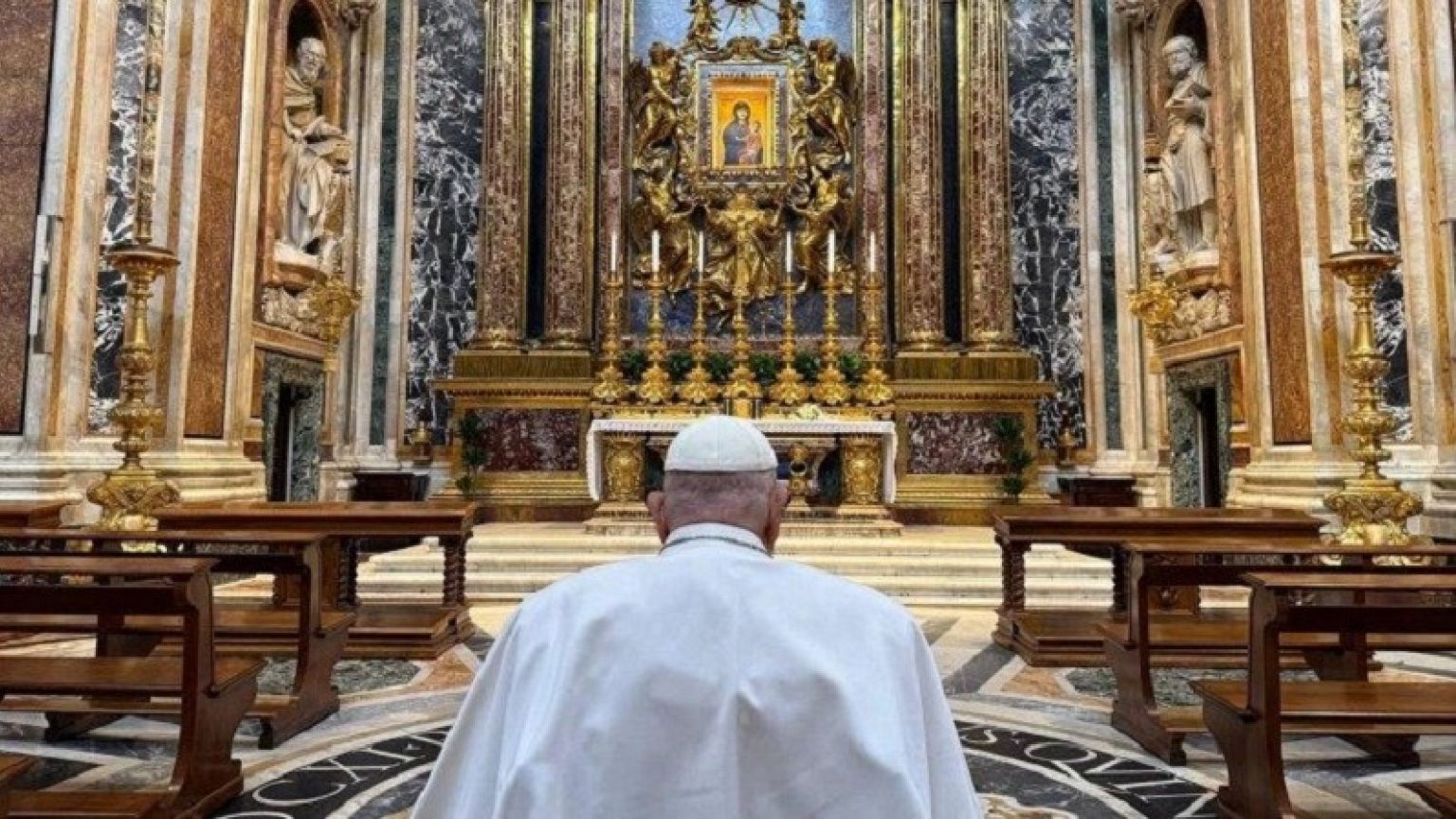|
|
General: SAN CARLOS DE BARILOCHE Y SU RELACION CON EL SANTO GRIAL
Elegir otro panel de mensajes |
|
|
Archivo de la etiqueta: Puerto de La Magdalena

Miras que jalonan la carretera en el puerto de La Magdalena
En Octubre de 1954 crucé por primera vez el puerto de La Magdalena viajando con toda la familia en el autobús de Beltrán camino de Villablino, el nuevo destino de mi padre como responsable de la oficina de Correos. Cuando pregunté por los cilindros de piedra de sección menguante que bordean un lado de la carretera del puerto, me dijeron que eran para que los operarios de la máquina que quitaba la nieve supieran donde estaba la carretera en las grandes nevadas. Creí que me tomaban el pelo pues me costaba imaginar que la nieve pudiera alcanzar dos o tres metros de espesor. Tardaríamos pocas semanas en percatarnos de lo diferente que era el invierno montañés de los que habíamos vivido en la Roa de Duero mesetaria. Mucho más frío y, sobre todo, abundante nieve que nos acompañaba durante tres o cuatro meses cada invierno. Era frecuente encontrar por la mañana una capa de nieve en la calle de más de cuarenta centímetros que teníamos que apartar con la pala en la puerta de casa para poder salir a la calle, aunque nada que ver con lo que decían de los vecinos de Leitariegos que debían hacer túneles en la nieve para ir de una casa a otra. Las mayores nevadas sucedían cuando empezaba a nevar casi sin querer, con el aire en calma y unos copos que descendían bamboleándose sin prisa pero de manera sostenida y que paulatinamente iban aumentando de tamaño. Cuando esto sucedía, era un espectáculo ver por la noche desde la ventana la danza vacilante de los copos de nieve iluminados por la farola de la esquina del bloque de Pérez Vega. Cuando la nevada se producía el sábado por la noche, al asomarnos a la ventana a primera hora del domingo veíamos todo nevado y sin una sola huella en la nieve. Acostumbrábamos a ir temprano a misa por lo que casi siempre éramos los primeros en dejar la marca de nuestras botas en la nieve, que recuerdo me causaba una sensación como de estrenar algo. Pisaba con extremo cuidado para que las huellas se mantuvieran claras, intentando no desfigurarlas con la nieve que se arrastraba al posar o levantar el pie. Para llegar a la iglesia de San Miguel teníamos que atravesar La Veiga, un extenso campo de labor cruzado en su mitad por una senda de tierra que habíamos recorrido cientos de veces y creíamos poder seguir a ciegas. Pero en los días de nevada todo se desfiguraba, incluso las inmensas y negras escombreras desaparecían en un paisaje completamente blanco e inusitadamente en calma. Las desigualdades del terreno desaparecían bajo la capa ondulada de nieve, de forma que no quedaba ni rastro del camino de La Veiga y comprobábamos como nos salirnos de la archiconocida senda cada poco trecho. Caminábamos como ciegos, a plena luz del día, corrigiendo el rumbo cada poco apuntando hacia donde sabíamos que estaba el final del camino señalado por las primeras casas de San Miguel. El agua que durante el día escurría de la nieve que había en los tejados de pizarra, por la noche se helaba y formaba unos carámbanos de más de un metro y varios kilos de peso. Las mañanas soleadas los carámbanos goteaban dibujando en la nieve del suelo una línea recta formada por tantos hoyitos como carámbanos colgaban del techo. Tan pronto el sol ablandaba la nieve del tejado lo suficiente, resbalaba sobre las losas del tejado y caía al suelo en cascada con un estruendo que asustaba, sobre todo en nuestra calle que era como un desfiladero formado por nuestra casa y las de Esteban y Rouco. La avalancha arrastraba los carámbanos, convertidos en puñales de hielo, y formaba trincheras de nieve al lado de las paredes de las casas que no desaparecían hasta varias semanas después de la última nevada. Para no quedar sepultado o malherido por las avalanchas, había que estar atento al ruido que hacía la nieve cuando empezaba a deslizar en el tejado y buscar refugio en el portal o apartarse antes de que varios quintales de nieve alcanzaran el suelo o un carámbano te trepanase la sesera. No recuerdo que ni a mí ni a nadie de la familia nos pescara alguna de estas avalanchas. Sustos si, unos cuantos cada invierno. Terminadas las nevadas veía en el suelo losas de pizarra que habían acompañado a la nieve en su caída y no podía por menos que imaginar mi cabeza partida en dos mitades, cada una de ellas con media mueca y nariz de un solo agujero, como por efecto de la guillotina manejada por un loco. Esta visión macabra hacía que me cubriera la cabeza con el codo cuando corría a refugiarme de las avalanchas, por si las losas. Entre nevada y nevada me enteré de que los monolitos de piedra del puerto de La Magdalena eran tan altos porque debían asomar por encima de los «traves» que se formaban donde el aire amontonaba la nieve con varios metros de espesor. Tras varios días aislados por carretera de León, era todo un acontecimiento la llegada del autobús de Beltrán gracias a que la expaladora había conseguido despejar los «traves» y dejar el camino expedito. Nevada tras nevada nos acercábamos paulatinamente hacía la primavera, cuando podríamos olvidarnos de los puñales helados y losas asesinas que caían de lo alto y no estar pendientes del ruido en los tejados. Suena a tópico decir que antes las nevadas eran mayores que las de ahora, pero los monolitos de piedra del puerto parecen confirmar que antes nevaba mucho. Lo que yo tengo claro es que nunca he vuelto a ver nevar como hace cincuenta años en el valle de Laciana, ni copos tan majestuosos como los que veía flotar indecisos en un espectacular ballet al trasluz de la farola del otro lado de la calle.

Leitariegos. Abriendo paso a paladas.
(Seguramente, las cosas sucedieron casi tal como las recuerdo. De las sensaciones no tengo duda.)
Imagen de cabecera tomada de: lasendaelnorte.blogspot.com. Foto de Leitariegos por gentileza de Luis Álvarez Pérez.

Autor: Emilio García de la Calzada
Publicado en Artículo | Etiquetado Cosas de Laciana, Cosas de Villablino, Emilio García de la Calzada, Fotos de Laciana, Historias de Laciana, Historias de Villablino, Laciana, Lacianiegos, lembranzas, Puerto de La Magdalena, Puerto de Leitariegos, Recuerdos de Laciana, Recuerdos de Villablino, Trave de nieve, Villablino | |
|
|
|
|
https://foro.tiempo.com/otero-de-las-duenas-la-magdalena-leon-t136810.0.html |
|
|
|
|
What to do in Paris in January
January is a month many of us like to forget. The Christmas festivities have come to an end, yet the warm days of spring still seem a lifetime away. Paris in January is different. Whilst spurned by spoiled Parisians, if you come prepared, there’s no reason you can’t start the new year with a bang.
Other advantages include smaller crowds at big name attractions and the chance to update your wardrobe with the winter sales. Wondering what’s on in Paris in January? You’ve come to the right place.
What’s the weather like in Paris in January?

The Parisian penchant for fluffy scarves is actually the result of an icy wind that can whip through the boulevards from the River Seine in the first months of the year.
With temperatures ranging between 3 – 8°C and averaging 5°C much off the day, decent winter clothing is a must for visiting Paris in January. Skies can be a little overcast throughout the month, although the lack of rain means you can probably do without the waterproofs. Average levels for January are just 18 mm.
It may also snow. However, it’s very unusual for snow to settle, so if you see flakes begin to drift across the city be sure to take a selfie!
What to expect from Paris in January
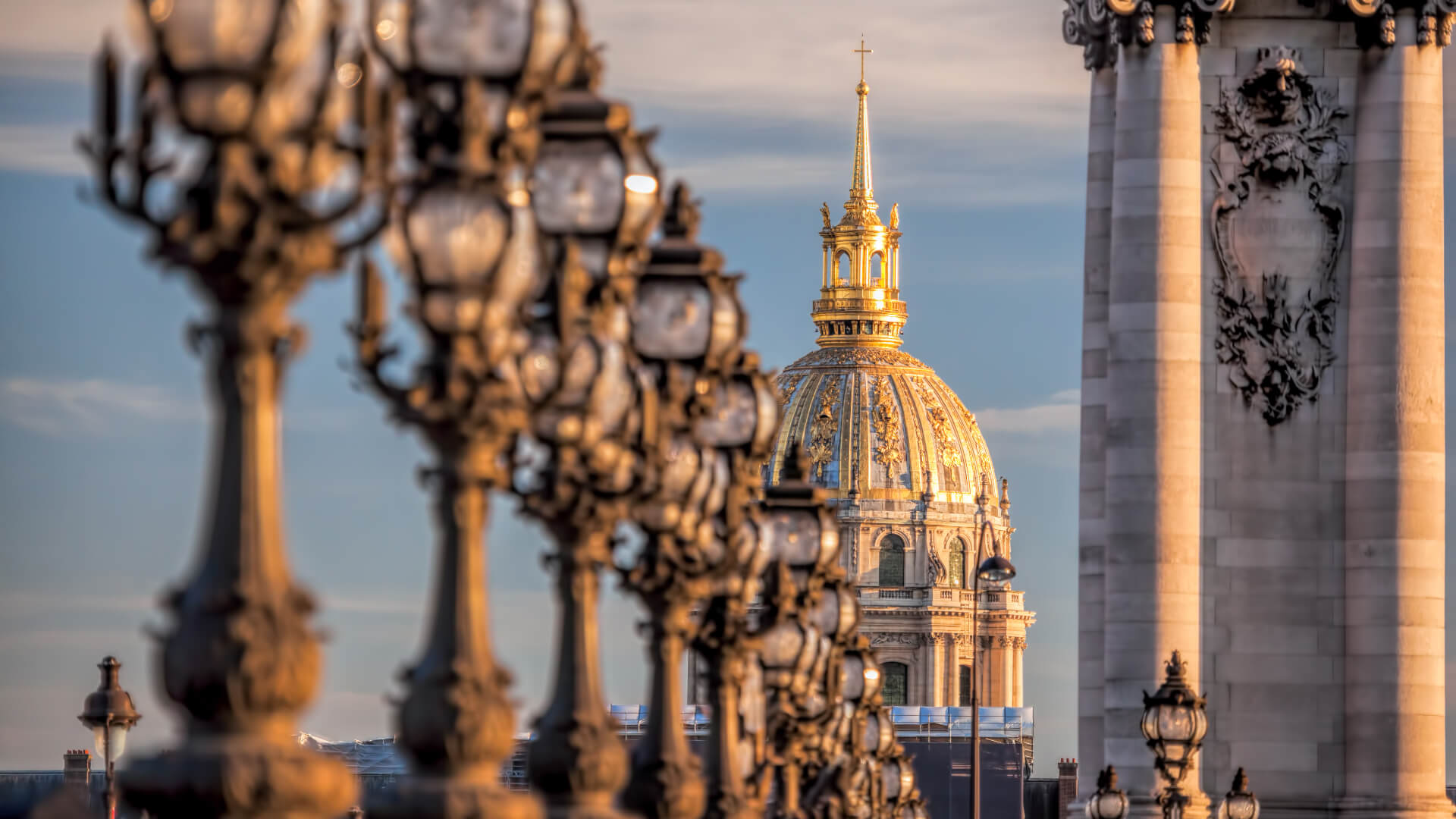
First off, it’s wrong to say that the Christmas period is all done and dusted. The first week to 10 days of January continues to spread much of the cheer of the season. Ice rinks and marché de Noël – that’s Christmas markets to you and me – often don’t shut up shop until after the new year begins.
It varies by market – there are up to 20 each year – but the biggest in Paris at the Tuileries Garden is generally a reliable friend right into January.
The Festival of Lights at the Jardin des Plantes botanic garden goes one step further, lighting up the 70 acre site until the end of the month. No ordinary light show, the festival is made up of large-scale lanterns in the form of various animals and other designs.
At the same time, most of those taking advantage of these events after Christmas week will be Parisians rather than travelers. Visit Paris in January and you therefore don’t face the same crowds you will at other times of year. Now’s the time to experience Paris at its most authentic.
Check out the Paris stores
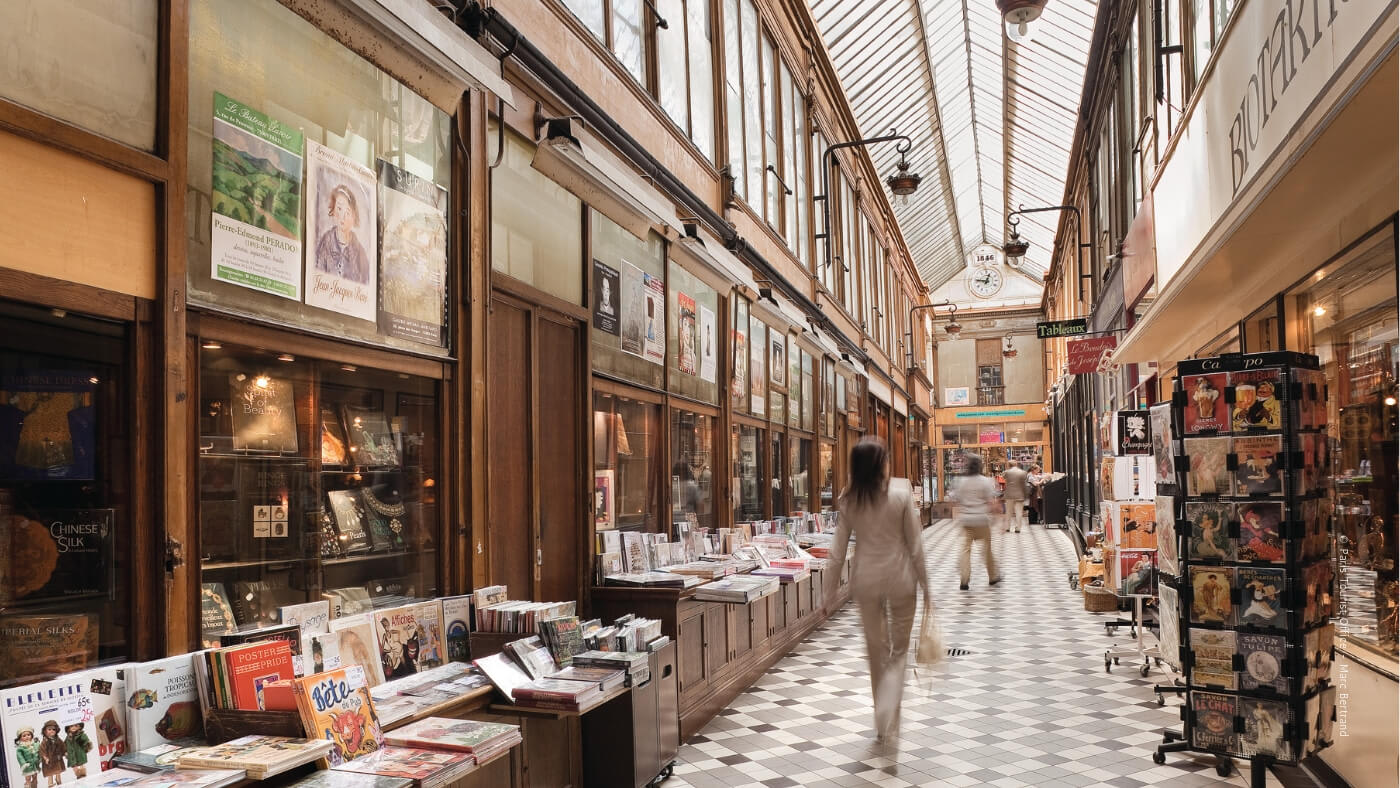
Paris is known as one of the finest shopping destinations in the world. Those keen to add a touch of Gallic elegance to their apparel are in luck. Not only do department stores including Galeries Lafayette host regular fashion shows, but January is the time of the winter soldes (sales) too.
Nor do any passing rain showers have to put you off. Covered shopping arcades are hidden across the city. Often bathed with natural light on even the gloomiest of days, their history dates back several centuries. Passage de Panoramas has some excellent dining options, whilst Galerie Vivienne is lined with luxury boutiques.
You might even find a patisserie selling galette de rois. Made from layers of puff pastry and almond paste, ‘king cake’ is a specialty of epiphany on January 6. Look out for the fève or figurine placed in each one. It grants the finder good luck for the following year, but has also been responsible for its fair share of broken teeth!
Join the café culture
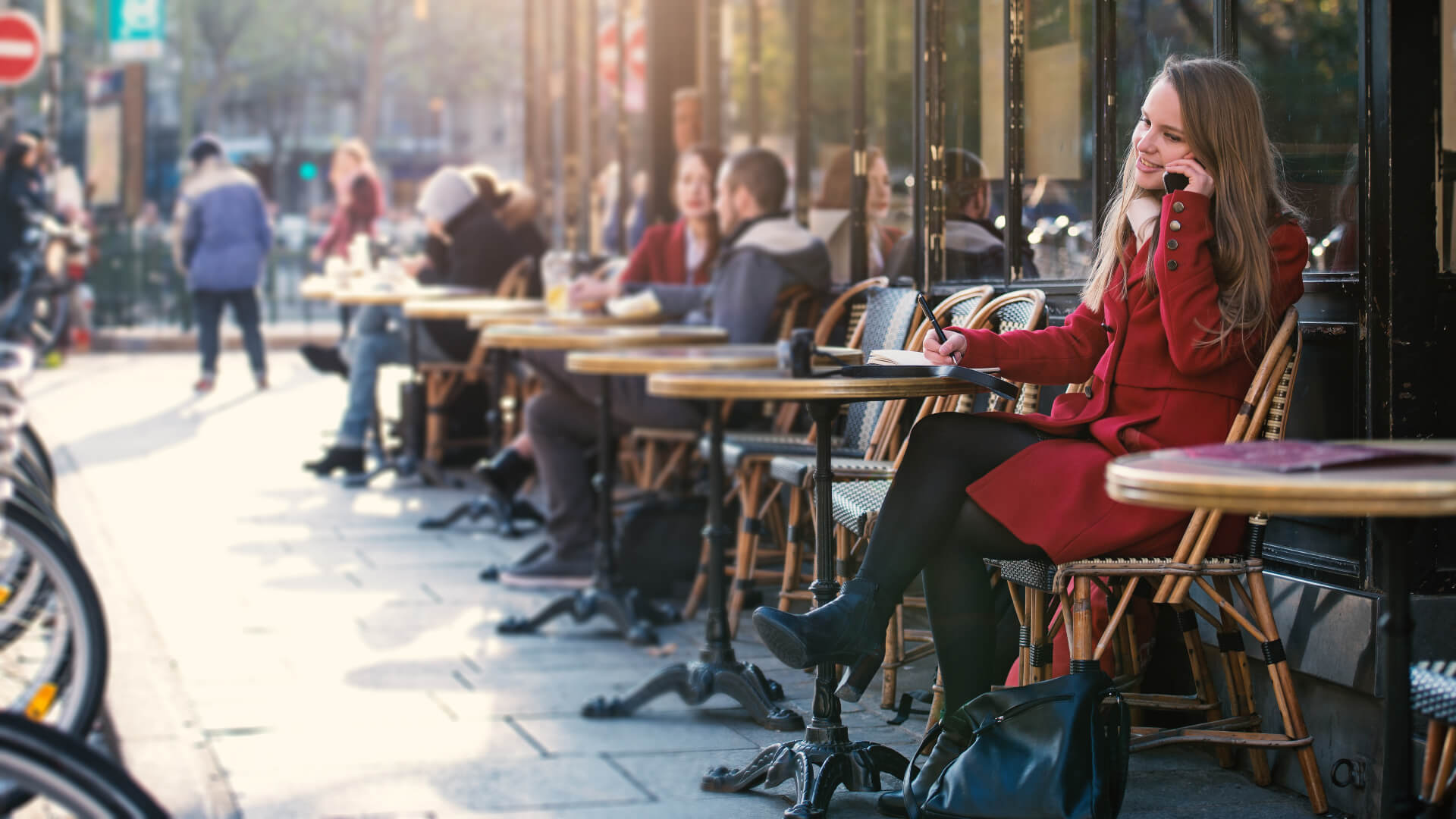
Another way to fight off the January chill in Paris is in its cafés. A key part of French culture, each has its own ambience and clientele, be that the out of work artists of Montmartre or the bankers of the La Défense business district. Stop by for a freshly-brewed café, and you’re sure to be tempted into also buying a pastry. The only real question is which do you choose – croissant, madeleine or éclair?
To feel at one with your adopted home, you might instead decide on a traditional Parisian breakfast at Café Louise. But that doesn’t have to stop you checking out the cake counter here or in any of the hundreds of independent coffee shops lining the streets of Paris.
For drinks with a little more potency, the heritage of Harry’s New York Bar is hard to beat. Shipped across the Atlantic from the Big Apple in the first part of the 20th Century, it became a favorite watering hole of Nobel prize for literature winner Ernest Hemingway. Order a bloody Mary, sidecar or Paris 75 cocktail – the bar claims to have invented all three.
Don’t miss Paris’s January events
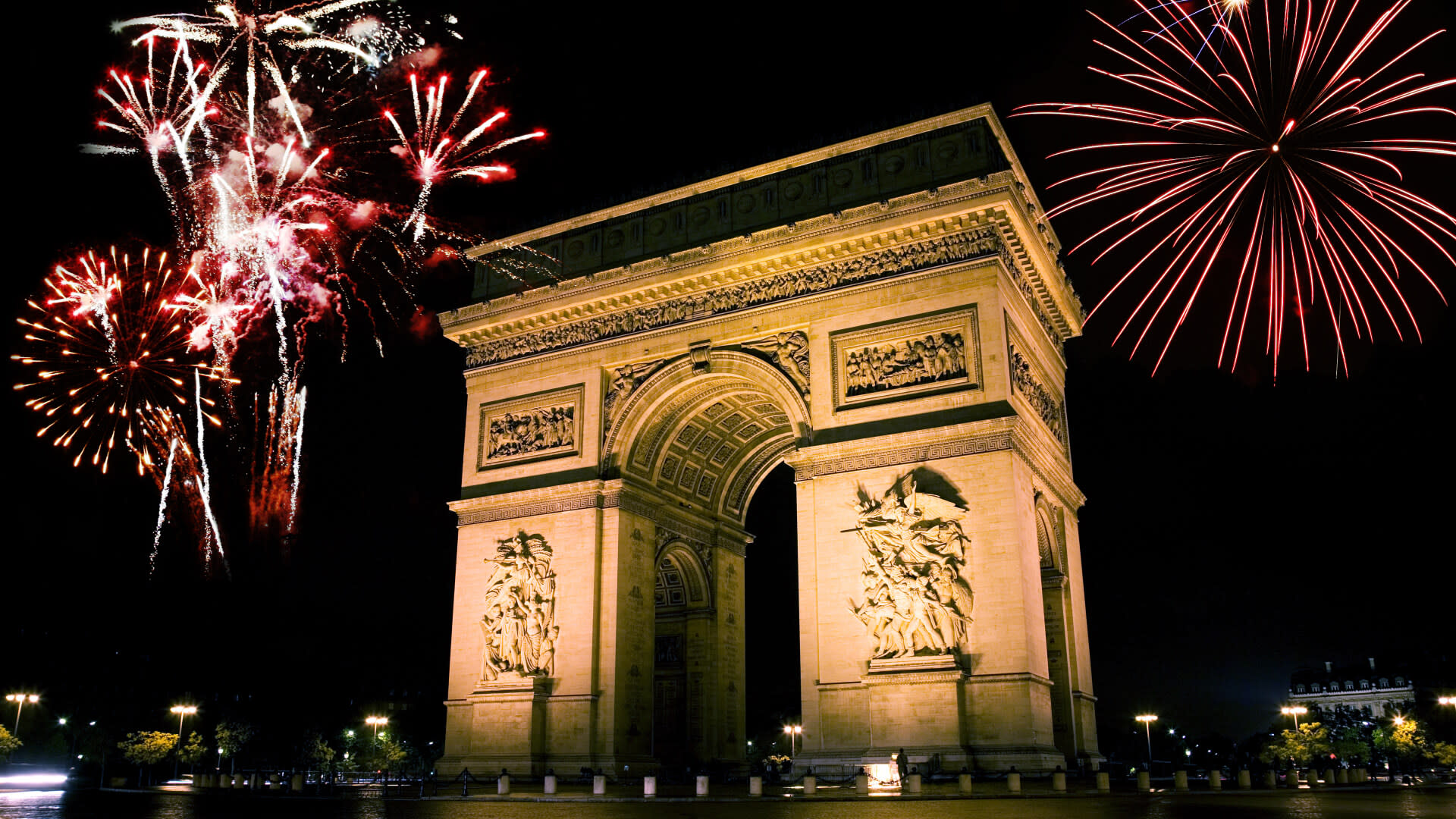
By far January’s biggest event is the New Year celebration. It is centered on the Arc de Triomphe rather than the Eiffel Tower. Hundreds of thousands of people gather at the monument to enjoy a spectacle that includes fireworks and live music.
The cabaret clubs of Montmartre and the Paris Opera ballet company put on special new year’s shows too. Other places to spend the day include the city’s churches, who put on a host of concerts. Don’t expect much else to happen on January 1 though. A national holiday, many stores and restaurants give their staff the day off to be with family.
Gear heads should also keep an ear to the ground for the Traversée de Paris winter vintage car and motorbike rally. Roughly 700 vehicles make the departure from Vincennes chateau in the southeast of the city before following a route that takes them to Les Invalides and the Place de la Concorde amongst other attractions.
Save on Paris January attraction admission
January is a great time of year for anyone who loves a bargain to visit Paris. There are the winter sales, some fantastic deals to be had on hotels and the ability to explore with Go City.
Our passes give you reduced admission at many of the top museums and attractions in Paris. Our flexibility allows you to choose as you save. If the weather brightens up, you don’t have to find yourself trapped indoors all day, and vice versa.
https://gocity.com/en/paris/things-to-do/paris-in-january |
|
|
|
|
Los años de Isabel Perón presa: del intento de suicidio al pacto de los 9 millones de dólares
Hace 40 años, después de cinco años encarcelada, fue liberada del Arsenal Naval de Azul y partió a Madrid. Después de que el Estado desistiera de cobrarle una condena civil por “apropiación de fondos públicos”, firmó un Acta de Coincidencias para la consolidación democrática promovida por Raúl Alfonsín, y luego se alejó de la vida política
06 Jul, 2021 01:38 a.m. AR
Fue la primera víctima de la dictadura militar, la primera encarcelada. Pasó cinco años, tres meses y once días prisionera en la residencia presidencial de El Messidor, junto al lago Nahuel Huapi, a 1.250 kilómetros de Buenos Aires, y luego en la Base Naval Azopardo, de la localidad bonaerense de Azul, donde se trasladaban los jueces para indagarla sobre sus actos de gobiernos.
Un avión Fokker la condujo al sur en el frío de la madrugada del 24 de marzo de 1976. La acompañaban su mucama y dos caniches. Isabel Perón comenzaba sus horas como prisionera política de la dictadura militar. Llegó a la residencia presidencial de El Messidor de Neuquén al clarear la mañana. Quedó incomunicada. Sin teléfono, sin revistas. Le rezaba rosarios a todos los santos.
Tenía 45 años. Hacía apenas 20 años que había conocido a Juan Domingo Perón en una playa de Panamá. Nunca hubiera imaginado, a partir de ese encuentro, que llegaría a ser presidenta de los argentinos y, mucho menos, que su incursión en la vida política terminaría así, detenida, prisionera de un grupo de militares que usurparon el poder del Estado.
Isabel, indagada por la Justicia
La Justicia comenzó a demandarla a los pocos días de reclusión. Las audiencias se realizaban en el comedor. En una de ellas, cuando la indagaba el juez Tulio García Moritán, Isabel subió corriendo a su habitación y se tiró a llorar a la cama.
La acusaban por el destino de los cheques de la fundación benéfica “Cruzada de la Solidaridad”, que ella presidía. Isabel deslindó responsabilidades. Dijo que José López Rega, como presidente de la Fundación, el funcionario del Ministerio de Bienestar Social Carlos Villone o el gerente Santiago Cousido le traían los cheques y, dado la confianza que les tenía y ante la certeza de que las decisiones habían sido aprobadas por el Consejo de Administración de la “Cruzada de la Solidaridad”, ella los firmaba. Pero era ajena a todo los trámites y papeles.
El cheque que más la comprometía era uno de 9 millones de dólares, producto de donaciones de distintos empresarios, que se había depositado en su cuenta personal del Banco Santander. Isabel dijo que de ese tema no sabía nada.
A menos de dos meses del golpe militar, el juez García Moritán la procesó.
Las visitas judiciales continuarían. El primero de mayo de 1976 llegó a la residencia de El Messidor el fiscal general Conrado Sadi Massüe por la investigación del destino de los fondos reservados. Isabel argumentó que podía disponer de ellos y que no debía revelar en qué los usaba, precisamente porque eran “reservados”, y eso alcanzaba para justificar las joyas que había comprado en Ricciardi para las esposas de los comandantes militares que luego la derrocarían, o el departamento que adquirió para su secretaria Dolores Ayerbe, “que lo necesitaba”, según indicó en la declaración judicial.
Isabel se sentía asfixiada por los funcionarios judiciales. Solía pasar las horas de su cautiverio encendiendo velas, rezando oraciones en su habitación y por las tardes recogía su pelo bajo una boina verde oliva y salía a pasear por Villa La Angostura, junto a su mucama Rosario, tirando flores al lago como un acto de fe, bajo estricta vigilancia militar.
Pero no soportaba el momento que vivía.
A los pocos meses de su cautiverio, el almirante Eduardo Massera -que tenía responsabilidad sobre la vida de miles de detenidos ilegales que permanecían secuestrados en la ESMA-, decidió tomar el control de la detención de Isabel y la alojó en el Arsenal Naval de Azul, en la provincia de Buenos Aires.
Fue en esa dependencia en la que Isabel intentó suicidarse.
La ex presidente continuaba al cuidado de su mucama española Rosario Álvarez Espinosa y los caniches, que marcaban una presencia constante en la vida de las dos mujeres. Incluso en una oportunidad uno de ellos se perdió en la Base y todos los oficiales salieron en su búsqueda.
Cautiva en Azul, Isabel dedicaba las mañanas a trabajos de jardinería, con una pala y una tijera, o también se ocupaba de pintar las sillas, alguna mesa, o puerta que veía en mal estado. Por las tardes solía pasar la biblioteca para dedicarse a la encuadernación, o tejía pulóveres y bufandas. También escribía poesías de tono espiritual y se entretenía con las novelas de Morris West. La complacía la apariencia de esa vida serena. Al poco tiempo el jardín floreció.
El intento de suicidio
Sin embargo la paz aparente de la vida cotidiana se deshizo cuando el 14 de junio de 1977 llegó una citación judicial. Le anticipaban que al día siguiente sería indagada. La citación afectó a Isabel porque entendía que la justicia jamás volvería a molestara. Esa tarde lloró. Estaba muy nerviosa. Le pidió a Rosario, su mucama, que le llevara el rosario de oro, el mismo que le había dado el Papa XII a Evita, y le pidió que se fuera y la dejara sola.
 Isabel tomando la comunión en privado La mucama la encontraría al cabo de un rato del salón de la casa donde vivían, en la base naval. Tenía entre sus manos temblorosas el rosario. Isabel acababa de volcar un frasco entero de pastillas Valium 10 mg hacia su estómago. La mujer alertó a la guardia de urgencia y los médicos le hicieron un lavaje a Isabel y le salvaron la vida.
Los días que siguieron trataron de que volviera a la calma. Pero los llamados a indagatorias judiciales le provocaban constantes crisis de nervios, atacaban el aparato intestinal y le irritaban el colón. También su columna vertebral le provocaba dolores. Los médicos le recomendaron tratamientos kinesiológicos.
Isabel en libertad: el peronismo en busca de su bendición
El día que cumplió 52 años, el 4 de febrero de 1981, el juez Martín Anzoátegui la sobreseyó por la causa de “fondos reservados”. Con esta resolución, Anzoátegui revertía el fallo del juez Sarmiento, quien decía haber encontrado “indicios vehementes” que probarían que Isabel enviaba dinero de “fondos reservados” a sus cuentas personales. El magistrado entendió que al tratarse de “fondos reservados” Isabel no tenía que rendir cuentas de su destino.
Sin embargo, a esas alturas, todavía le quedaba por cumplir la condena por la causa de la “Cruzada de la Solidaridad”. En ese expediente pesaba la acusación de haber transferido nueve millones de dólares a su cuenta del Banco Santander.
Seis meses después, en julio de 1981, cuando cumplió dos terceras partes de la condena de siete años y medio -la Cámara le redujo seis meses a último momento-, Isabel quedó en libertad luego de cinco años de prisión.
Apenas pudo viajó y se desligó de la mucama que la había acompañado durante 21 años -y que la había acompañado voluntariamente en sus años de prisión en la dictadura- y se recluyó en Madrid.
El criminal de guerra Milo de Bogetich se convirtió en su asistente y mayordomo. De algún modo, Bogetich reemplazó a López Rega en sus tareas de 25 años atrás, cuando lo había llevado Madrid y lo había hospedado en su residencia de Puerta de Hierro, junto a Perón.
 En julio de 1981, cuando cumplió dos terceras partes de la condena de siete años y medio -la Cámara le redujo seis meses a último momento-, Isabel quedó en libertad luego de cinco años de prisión (Getty Images) Ahora, en 1981, Isabel no quería saber nada de López Rega. Sentía que toda la pesadilla que había vivido en su gobierno había sido ocasionada por su ex secretario.
Se preocupó por recobrar un anillo de diamantes, el dinero atesorado en un banco suizo, a nombre de los dos, y también por recuperar los fondos –originalmente eran 8.400.000 millones de dólares– que Perón había recibido en concepto de restitución de bienes. Fueron las misiones que Isabel encargó a sus apoderados Julio Arriola, Ricardo Fabbris y “Cacho” Bustos apenas fue liberada.
Después de la derrota en la guerra por las islas Malvinas y con la apertura democrática, los dirigentes justicialistas volverían a cortejarla. Algunos de ellos pasaban días enteros merodeando por Madrid, a la espera de ser recibidos por la ex presidenta en su departamento. Si veinte años antes La Meca del peronismo había sido Puerta de Hierro, ahora, en menor escala, lo era el piso de Isabel en Moreto 3, Madrid.
Carlos Menem, ex gobernador de La Rioja, también prisionero de la dictadura, había sido uno de ellos. Interesado en una entrevista con la ex presidenta, se acercó hasta allí y dejó un ramo de rosas. Sin embargo, Isabel ordenó tirar el presente del riojano al pie de un árbol, en la calle.
El peronismo retomaba la actividad política con el mismo desorden interno que había exhibido tras la muerte de Perón. La muerte de su líder histórico había agravado la violencia entre las facciones del Movimiento y después la dictadura aplastó a su militancia con la metodología de secuestros y desapariciones.
Ahora el peronismo emergía con los mismos dirigentes de antaño -los mismos jefes sindicales, los mismos caudillos provinciales-, y sin una figura que lograra concentrar consensos adentro y afuera de sus filas. De la izquierda peronista sólo habían sobrevivido algunas voces testimoniales. El peronismo no se había reinventado. La estructura partidaria había quedado a manos del metalúrgico Lorenzo Miguel.
 En septiembre de 1975, luego de la crisis militar la señora de Perón se tomó una licencia en Ascochinga, Córdoba, y el senador Ítalo Luder la reemplazó. Su retorno al poder en octubre marcó el comienzo de la conspiración y en marzo del año siguiente fue derrocada. Años después, él senador fue elegido como presidente del partido Aunque la presidenta continuó siendo Isabel Perón, la influencia de Lorenzo Miguel y del sindicalismo fue decisiva en el armado político. Aún en su incertidumbre, el Partido Justicialista buscó reorganizar su estructura, abrir el proceso de afiliaciones y buscar una candidatura que culminaría con la elección del ex senador Ítalo Luder, una figura moderada, sin carisma personal, que intentaba presentarse como “un continuador de la obra de Perón”.
Sin embargo, la posibilidad del regreso de Isabel al país se mantuvo latente.
Incluso pocos meses antes de las elecciones del 30 de octubre de 1983, se afirmó que regresaría al país y encabezaría un acto multitudinario en el estadio de River Plate. Pero la especulación acabaría sólo como especulación.
Durante todo el proceso electoral, Isabel no envió señales al peronismo e Ítalo Luder, que además era su abogado, esperó en vano una declaración o al menos un telegrama de respaldo a su candidatura presidencial. Nunca llegó.
El pacto Alfonsín-Isabel, la versión local de “La Moncloa”
Isabel volvería a la Argentina en diciembre de 1983, para participar de los festejos de la asunción de Raúl Alfonsín. La nobleza de su gesto sería compensada por el presidente radical con un decreto presidencial -el decreto 1301-, fundado en la intención de “lograr la unión de todos los argentinos”.
Mediante el decreto, el Estado desistía del cobro de nueve millones de dólares que Isabel Perón había sido obligada a restituir por la condena civil de la causa de la Cruzada de la Solidaridad, en la que había apropiado fondos públicos de una recaudación solidaria y derivados a una cuenta personal.
El decreto se había sido gestado luego de un acuerdo entre el procurador general del Tesoro de la Nación Héctor Fassi y el apoderado de Isabel, Manuel Arauz Castex.
Su alcance político era indisimulable, y sería puesto en evidencia cuando el Presidente promovió un diálogo para la “consolidación democrática” con distintos partidos.
La convocatoria debía incluir en forma obligada al Justicialismo, pero Alfonsín prefería evitar las negociaciones con Lorenzo Miguel, vicepresidente del partido, al que había denunciado en la campaña electoral por su “pacto con los militares”.
Entonces, el nombre de Isabel volvió a rondar la Casa Rosada. Se requería un viaje a Madrid para sondear su temperamento ante un posible acuerdo para la “unidad”.
 Isabel volvería a la Argentina en diciembre de 1983, para participar de los festejos de la asunción de Raúl Alfonsín. La nobleza de su gesto sería compensada por el presidente radical con un decreto presidencial, fundado en la intención de “lograr la unión de todos los argentinos” En mayo de 1984, Dante Caputo fue recibido en el departamento de Moreto 3. El canciller le ofreció a la ex presidenta todas las garantías políticas y económicas para que aceptara la invitación presidencial a un diálogo político y se trasladara a la Argentina.
El acuerdo incluía la promesa del juez José Nicasio Dibur de no convocarla como testigo en la causa de la Triple A. Se presumía que la viuda de Perón podría dar alguna información al respecto, dado que la organización terrorista paraestatal había mostrado su esplendor durante su gobierno, y uno de sus jefes era su ex secretario, el ahora prófugo López Rega. Los gestos del radicalismo hacia Isabel no terminarían en el decreto presidencial.
En el Parlamento, el bloque radical presentó un proyecto conjunto con el peronismo para sancionar la ley 23.062, de “reparación histórica” que en su primer artículo establecía que “carecen de validez jurídica las normas y los actos administrativos emanados de las autoridades de facto surgidas por un acto de rebelión y los procesos judiciales y sus sentencias, que tengan por objeto el juzgamiento o la imposición de sanciones a los integrantes de los poderes constitucionales”.
Y para que no hubiese más dudas sobre la motivación última de la ley, la hacía señalaba: “Declárase comprendida en las previsiones de los artículos precedentes la situación de la ex presidente de la Nación doña María Estela Martinez de Perón”.
El radicalismo y el justicialismo se unían para reivindicar a Isabel en términos históricos, políticos y jurídicos. Pero el debate parlamentario previo a la aprobación de la “Ley de Reparación Histórica” agitó algunos fantasmas.
¿Qué sucedería si luego se acogía a la ley López Rega, que estaba siendo juzgado por el mismo delito en la misma causa de la “Cruzada de la Solidaridad” que Isabel Perón ?
Pero el Parlamento entendió que si la ley presentaba fallas jurídicas, su espíritu en favor de la “consolidación de la democracia” estaba por encima de ellas.
Una semana después de sancionada la “Ley de Reparación Histórica”, Isabel regresó al país, y como presidenta del PJ firmó el “Acta de Coincidencias”, una versión local de “El Pacto de La Moncloa” español, para estabilizar el proceso de transición democrática.
Entre otros aspectos el Acta rechazaba “cualquier intento de derrocamiento por la fuerza de las autoridades legítimamente constituidas” y también se comprometía a aceptar la resolución de la Santa Sede por el diferendo de las islas del Canal de Beagle con Chile.
 Isabelita, durante una de sus infrecuentes salidas en Madrid. Allí se instaló y se alejó definitivamente de la vida política de la Argentina El Acta de Coincidencias fue firmado por 16 partidos políticos -además del PJ, se sumaron la UCR, Democracia Cristiana, el MID, el Socialismo Popular, entre otros-, y fue rechazado por el PI, la UCD, el PC y el FIP.
Para entonces, Alfonsín, que había ordenado la constitución de la CONADEP para iniciar el juzgamiento a las Juntas Militares, ya había excluido de las investigaciones a los responsables de las desapariciones forzadas y los crímenes del aparato paraestatal de los gobiernos de Perón y de Isabel Perón.
Los crímenes del Estado se investigarían desde el 24 de marzo de 1976 en adelante. Después de la firma del Acta, Isabel regresaría a Madrid y jamás volvería a intervenir en la política argentina.
* Marcelo Larraquy es periodista e historiador (UBA). Es autor de “López Rega, el peronismo y la Triple A”. Ed. Sudamericana. www.marcelolarraquy.com
SEGUIR LEYENDO:
https://www.infobae.com/sociedad/2021/07/06/los-anos-de-isabel-peron-presa-del-intento-de-suicidio-al-pacto-de-los-9-millones-de-dolares/ |
|
|
|
|
Pope Francis leads tributes to former Pope Benedict, who died age 95
Copyright Andrew Medichini/Copyright 2018 The AP. All rights reserved.
By Euronews
Published on 31/12/2022 - 10:59 GMT+1•Updated 19:15
Benedict died on Saturday morning in the monastery in the Vatican gardens where he had retired.
Pope Francis has lead the tributes to his predecessor Pope Emeritus Benedict XVI, who has died at the age of 95.
The Vatican confirmed Benedict's death on Saturday morning, saying he passed away at a monastery on Vatican grounds where he had lived since 2013.
Giving his homily at the end of year celebration of Vespers and the Te Deum -- Catholic religious ceremonies -- Pope Francis remembered Benedict as a noble and kind man of faith.
"We are moved as we recall him as such a noble person, so kind. And we feel such gratitude in our hearts: gratitude to God for having given him to the Church and to the world; gratitude to him for all the good he accomplished, and above all, for his witness of faith and prayer, especially in these last years of his recollected life," said Pope Francis.
"Only God knows the value and the power of his intercession, of the sacrifices he offered for the good of the Church.”
Benedict became the first pope in 600 years to retire from the role and his health had declined in recent years. Over the last few days his health had deteriorated further, but the Vatican had indicated on Friday that his condition was "stable" and that he had participated in the celebration of mass in his room the previous day.
Funeral to take place next week
A Vatican spokesperson confirmed that the funeral of former Pope Benedict will take place next Thursday 5 January at 09:30 CET in St. Peter's Square, and be presided over by Pope Francis.
"From the morning on Monday, the body of the Pope Emeritus will be in the Basilica of Saint Peter, where the faithful can go with their prayers for a last meeting with the Pope Emeritus, to greet him and to say goodbye," Matteo Bruni added.
The funeral of the 265th pope, celebrated by his successor, will be an unprecedented event in the two thousand year history of the Catholic Church which tens of thousands of people are likely to attend, including heads of state.
European leaders paid tribute to Pope Emeritus Benedict on Saturday, including Italian Prime Minister Giorgia Meloni, French President Emmanuel Macron, German Chancellor Olaf Scholz, and British Prime Minister Rishi Sunak.
Who was Pope Benedict, the first German pope in a thousand years?
Pope Emeritus Benedict's death puts an end to the unusual cohabitation of two men in white: the German Joseph Ratzinger, a brilliant theologian not very comfortable with crowds, and the Argentinian Jorge Bergoglio, a Jesuit endowed with an incisive word who wanted put the poor and migrants back at the center of the Church's mission.
Benedict was the first German pope elected to head the Catholic church in thousand years when he succeeded John Paul II in April 2005.
Then known as German Cardinal Joseph Ratzinger, he became the 265th leader of the Roman Catholic Church, choosing the name Benedict XVI.
His appointment came after he had headed the Vatican's Congregation for the Doctrine of the Faith from 1982 to 2005.
At the time, Benedict was labelled by one cardinal as a “safe pair of hands” but his eight-year papacy was marked by missteps and scandals.
Benedict was also the first pope to retire in 600 years.
Joseph Ratzinger was born to a Catholic family on 16 April 1927 in Marktl am Inn, a small village in southeast Germany. He spent much of his adolescence here, near the Austrian border.
He often described himself as a “Mozartian” and enjoyed playing the piano throughout his life.
After his 14th birthday in 1941, Ratzinger enrolled in the Hitler Youth.
Membership in the Nazi organisation was legally required at the time, and the teenage boy remained in the Hitler Youth to avoid tuition fees, later enrolling in the auxiliary anti-aircraft service at the end of World War II.
Ratzinger was eventually exonerated and even embraced by some Jews -- he called the Holocaust a "dark time" in his life.
After studying philosophy and theology at the University of Munich, he was ordained a priest in 1951, alongside his brother Georg.
Abuse scandals
Cardinal Joseph Ratzinger then served as archbishop of Munich from 1977 to 1982.
This period of his life later came under particular scrutiny amid widespread allegations of sexual abuse within the Catholic Church.
Although his legacy was damaged by the scandal, Benedict was responsible for turning around the Vatican’s approach to abuse by the clergy.
He was the first pope to meet with victims of abuse and directed the church to pursue a path of humility by seeking forgiveness. In 2001, he ordered for all cases to be sent to his office for processing, once he saw that accused bishops were being moved from parish to parish and not being punished.
During the final two years of his pontificate, Benedict defrocked nearly 400 priests for abuse.
But in 2018, a church-commissioned report concluded that at least 3,677 people were abused by the clergy in Germany between 1946 and 2014.
Another long-awaited report then accused Benedict of mishandling four sexual abuse allegations in the Munich archdiocese. He was criticised for failing to remove priests, even after they had been criminally convicted.
In February, Benedict asked for forgiveness for any “grievous faults”, but did not admit to any personal wrongdoing.
Earlier in his papacy, Benedict XVI had faced other criticisms and controversies.
In 2006, just one year after being elected, he caused ire when he suggested that Islam brought only evil to the world. Following days of protests, Benedict said he was "deeply sorry" and that his speech was misunderstood.
Less than three years later, he also angered Jews by rehabilitating four ultra-traditionalist bishops, including a Holocaust denier.
In 2012, the “Vatileaks” scandal – which unearthed financial corruption and blackmail – also shook Benedict’s papacy.
In a shock announcement in February 2013, the then-86-year-old said he lacked the "strength of mind and body" to run the Church and bowed out.
In his later years, Benedict grew increasingly frail as he dedicated his post-papacy life to prayer and meditation.
Francis, who visited the former pontiff shortly after his general audience on Wednesday (December 28), has often praised Benedict, saying it was like having a grandfather in the home.
One of the last known photographs of Benedict was taken on 1 December, when he met the winners of a prize for theologians named after him.
https://www.euronews.com/2022/12/31/former-pope-benedict-xvi-has-died-age-95 |
|
|
|
|
Adolf Hitler (* 20 April 1889 in Braunau am Inn) († 30 April 1945 Berlin), Leader of the Nazi Party, Reich Chancellor from 1933, also self-appointed "Fuehrer" and head of state of Germany.
https://www.album-online.com/detail/es/YTRkYWI0MA/adolf-hitler-april-1889-braunau-am-inn-1945-berlin-leader-alb5556224
EASTER SUNDAY
Mary Magdalene, seeing that the stone of the tomb had been rolled away, ran to tell Peter and John. After receiving the shocking news, the two disciples also went out and — as the Gospel says — “the two were running together” (Jn 20:4). The main figures of the Easter narratives all ran! On the one hand, “running” could express the concern that the Lord’s body had been taken away; but, on the other hand, the haste of Mary Magdalene, Peter and John expresses the desire, the yearning of the heart, the inner attitude of those who set out to search for Jesus. He, in fact, has risen from the dead and therefore is no longer in the tomb. We must look for him elsewhere.
This is the message of Easter: we must look for him elsewhere. Christ is risen, he is alive! He is no longer a prisoner of death, he is no longer wrapped in the shroud, and therefore we cannot confine him to a fairy tale, we cannot make him a hero of the ancient world, or think of him as a statue in a museum! On the contrary, we must look for him and this is why we cannot remain stationary. We must take action, set out to look for him: look for him in life, look for him in the faces of our brothers and sisters, look for him in everyday business, look for him everywhere except in the tomb.
We must look for him without ceasing. Because if he has risen from the dead, then he is present everywhere, he dwells among us, he hides himself and reveals himself even today in the sisters and brothers we meet along the way, in the most ordinary and unpredictable situations of our lives. He is alive and is with us always, shedding the tears of those who suffer and adding to the beauty of life through the small acts of love carried out by each of us.
For this reason, our Easter faith, which opens us to the encounter with the risen Lord and prepares us to welcome him into our lives, is anything but a complacent settling into some sort of “religious reassurance.” On the contrary, Easter spurs us to action, to run like Mary Magdalene and the disciples; it invites us to have eyes that can “see beyond,” to perceive Jesus, the one who lives, as the God who reveals himself and makes himself present even today, who speaks to us, goes before us, surprises us. Like Mary Magdalene, every day we can experience losing the Lord, but every day we can also run to look for him again, with the certainty that he will allow himself to be found and will fill us with the light of his resurrection.
Brothers and sisters, this is the greatest hope of our life: we can live this poor, fragile and wounded existence clinging to Christ, because he has conquered death, he conquers our darkness and he will conquer the shadows of the world, to make us live with him in joy, forever. This is the goal towards which we press on, as the Apostle Paul says, forgetting what lies behind and straining forward to what lies ahead (cf. Phil 3:12-14). Like Mary Magdalene, Peter and John, we hasten to meet Christ.
The Jubilee invites us to renew the gift of hope within us, to surrender our sufferings and our concerns to hope, to share it with those whom we meet along our journey and to entrust to hope the future of our lives and the destiny of the human family. And so we cannot settle for the fleeting things of this world or give in to sadness; we must run, filled with joy. Let us run towards Jesus, let us rediscover the inestimable grace of being his friends. Let us allow his Word of life and truth to shine in our life. As the great theologian Henri de Lubac said, “It should be enough to understand this: Christianity is Christ. No, truly, there is nothing else but this. In Christ we have everything” (Les responsabilités doctrinales des catholiques dans le monde d'aujourd'hui, Paris 2010, 276).
And this “everything” that is the risen Christ opens our life to hope. He is alive, he still wants to renew our life today. To him, conqueror of sin and death, we want to say:
“Lord, on this feast day we ask you for this gift: that we too may be made new, so as to experience this eternal newness. Cleanse us, O God, from the sad dust of habit, tiredness and indifference; give us the joy of waking every morning with wonder, with eyes ready to see the new colours of this morning, unique and unlike any other. […] Everything is new, Lord, and nothing is the same, nothing is old” (A. Zarri, Quasi una preghiera).
Sisters, brothers, in the wonder of the Easter faith, carrying in our hearts every expectation of peace and liberation, we can say: with You, O Lord, everything is new. With you, everything begins again.
https://www.vatican.va/content/francesco/en/homilies/2025/documents/20250420-omelia-pasqua.html |
|
|
 Primer Primer  Anterior 2 a 10 de 10 Siguiente Anterior 2 a 10 de 10 Siguiente  Último Último  |
|
|
|
|
|
Misa en Bariloche por la muerte del Papa Francisco. 3 views · 1 hour ... Cardinal Dolan on significance of Pope Francis dying after Easter.
|
|
|
|
|
THE MIRACLE OF THE SNOW AT ROME'S SANTA MARIA MAGGIORE
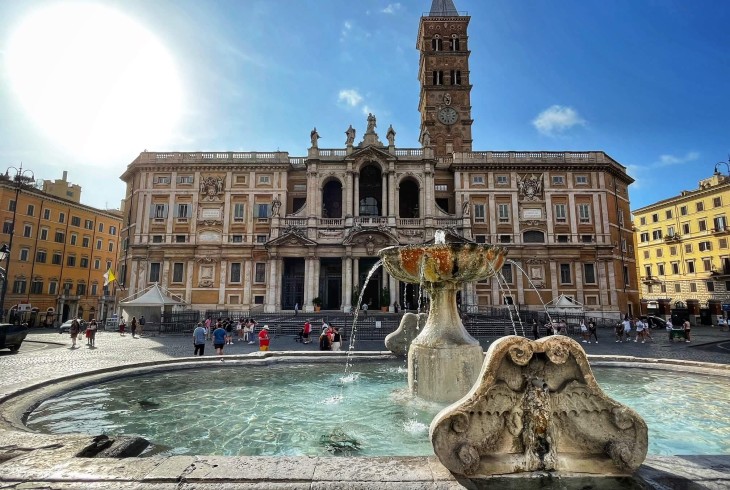
Every year on August 5th, right at the height of the fierce Italian summer, Romans descend on the ancient basilica of Santa Maria Maggiore to celebrate one of the city’s strangest miracles.
The subject of the festivities is La Madonna Della Neve, or the Madonna of the Snows, and features the recreation of a miraculous summer snowfall that, according to venerable Christian legend, took place at the site of the future church on this day in the year 358 AD.
The annual modern spectacle, which is organised by the Italian Ministry of Culture in conjunction with the Vatican authorities and has been ongoing since 1983, includes the artificial snowfall - snowflakes are represented by foaming suds blown through the stifling summer air - a spectacular light show where a kaleidoscope of coloured lights flicker and illuminate the beautiful church facade, and a musical performance and parade by the Carabinieri police band. Reminding us that this is a religious celebration, two masses of Thanksgiving to the Madonna take place at 10 am and 5 pm. But what is the legend of the miraculous Snow, and why is the story so important for the church of Santa Maria Maggiore?
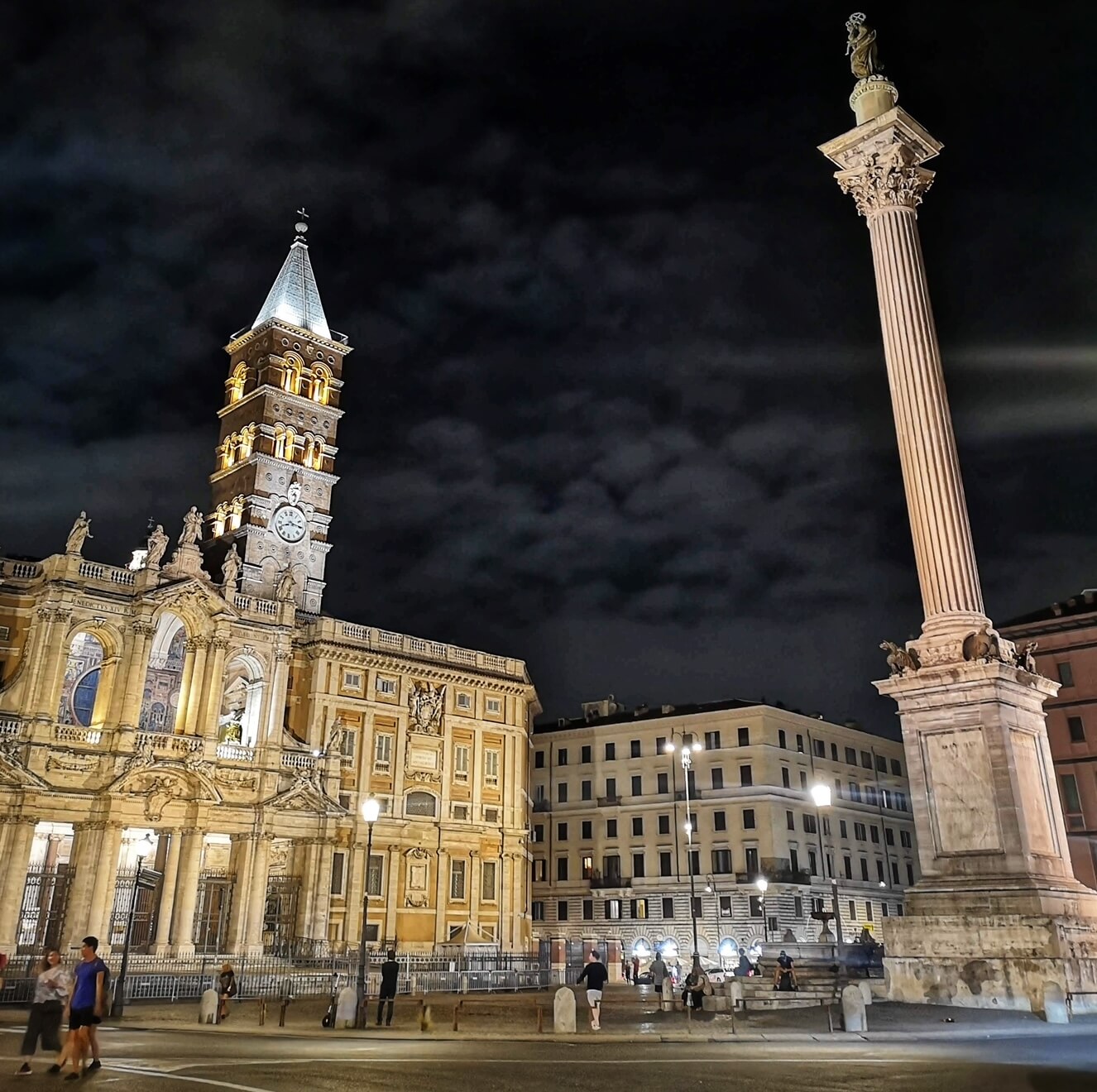 Santa Maria Maggiore at night Santa Maria Maggiore at night
The story takes us all the way back in time to the fourth century. The practising of Christianity had only been legalised by the Emperor Constantine a few short decades earlier, and the Faith still had some way to go before it would finally become the dominant religion of the Empire. Nonetheless, Christianity was attracting plenty of converts in Rome from all classes of society, and amongst the zealous new converts was a wealthy nobleman by the name of Giovanni and his wife.
The childless couple had plenty of cash that they wished to use to aid the Christian community, and so they prayed to the Virgin Mary for advice on how to best use their capital. The Madonna soon obliged, appearing in a dream to the couple in which she instructed them to finance a new church at the side of the miraculous summer snow that would fall that very night on Rome‘s Esquiline Hill.
Setting out in search of the promised site, Giovanni soon ran into pope Liberius, who it turned out had experienced the same vision and was himself searching for the location of the promised snow.
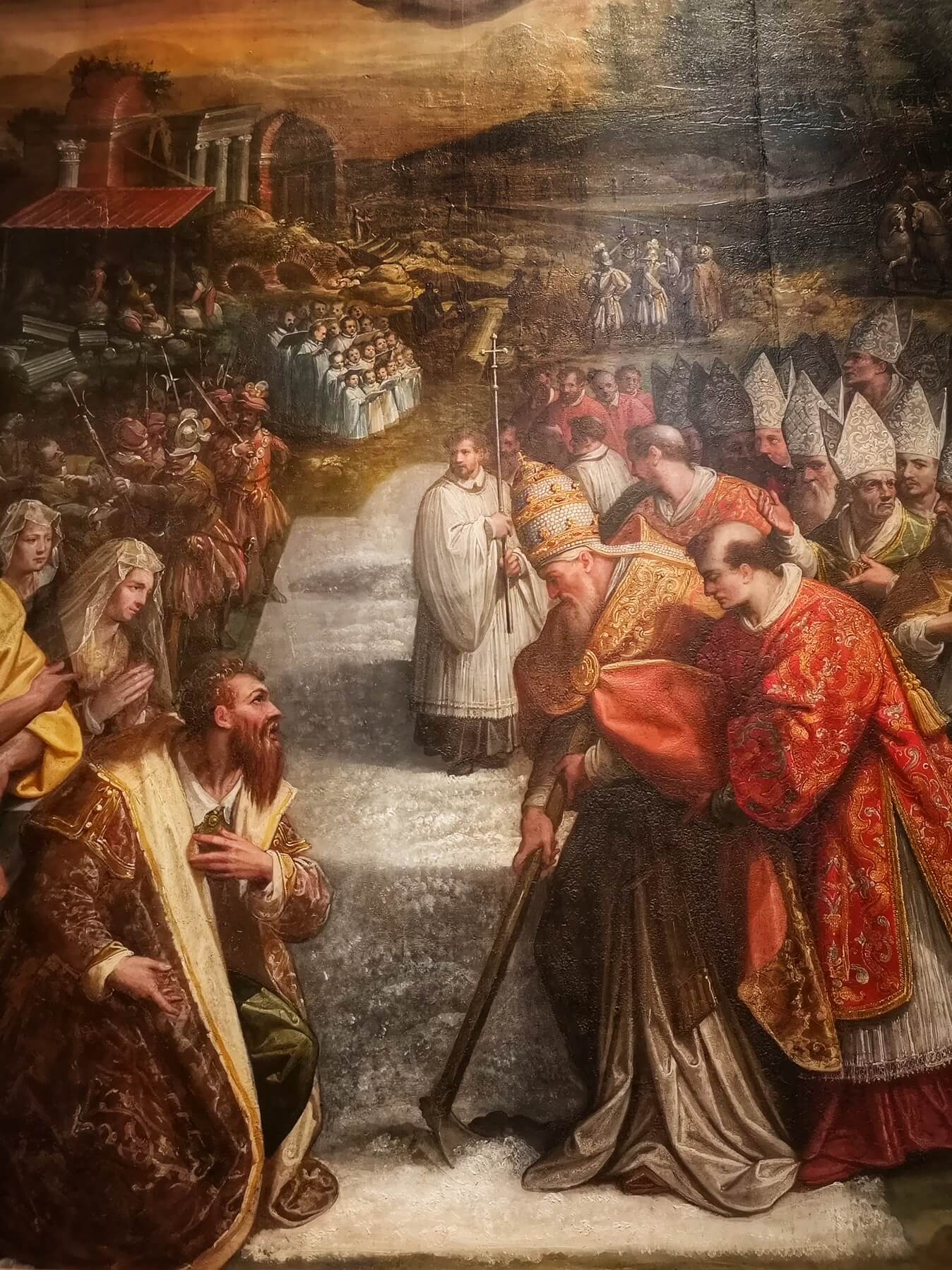 Jacopo Zucchi's Miracle of the Snow, Vatican Pinacoteca Jacopo Zucchi's Miracle of the Snow, Vatican Pinacoteca
Having found the thick white carpet of snow on the Esquiline slopes, the pontiff proceeded to trace the outline of the church-to-be in the snow. Masons and artisans were soon called to the site, and construction on the basilica began with Giovanni and his wife’s largesse funding the works. A beautiful 16th-century painting now in the Pinacoteca of the Vatican Museums by the artist Jacopo Zucchi shows an eager crowd gathered around the summer snow as the Pope marks out the perimeter of the basilica walls with a hoe, as a motley cast of bishops, prelates and altar boys watch on. Giovanni and his wife kneel in wonder at the miraculous event.
 The Virgin Mary looks down over Piazza Santa Maria Maggiore from the Column of Peace The Virgin Mary looks down over Piazza Santa Maria Maggiore from the Column of Peace
No trace of the original basilica traced by Liberius on that distant snowy morning remains - the church now standing on the site is still pretty ancient however, dating from the 430s. Within, an original cycle of 5th-century mosaics high on the nave walls beneath the windows are amongst the oldest and most beautiful Christian artworks in Italy. Vibrant scenes from the Old Testament lives of the patriarchs Abraham, Isaac, Jacob and Moses are represented in the realistic style of classical art, contrasting with the fabulous, more abstract 13th-century Byzantine mosaics in the apse. In the crypt beneath the high altar meanwhile are supposed remains of Christ’s manger, housed in an elaborate crystal reliquary. Santa Maria Maggiore is a must-visit on any trip to Rome!
The festival of the miraculous snowfall at Santa Maria Maggiore will take place between 9 PM and midnight in the piazza in front of the basilica on Saturday 5th August 2023.
https://www.througheternity.com/en/blog/history/miracle-snow-santa-maria-maggiore-rome.html# |
|
|
|
|
YouTube · TVC News Nigeria
|
|
|
|
|
A still recovering Pope Francis makes surprise visit to basilica Santa Maria Maggiore in Rome
By Euronews
Published on 12/04/2025 - 20:09 GMT+2•Updated 20:13
On Saturday afternoon Pope Francis went to the basilica of Santa Maria Maggiore to pray.
In another surprise visit by Pope Francis early Saturday afternoon, Vatican sources confirmed that the Pontiff visited the basilica of Santa Maria Maggiore in Rome and stopped to pray before the icon of the Virgin, Salus Populi Romani, on the eve of Palm Sunday and Holy Week.
The Pope's previous surprise events
On Thursday, Pope Francis visited St. Peter's Basilica to check the progress of the restoration of two funerary monuments, those of Popes Paul III and Urban VIII, whose works will be presented on Sunday.
Before moving on to the tomb of Pius X, where he gathered in prayer, the pope, who was wearing trousers and a poncho instead of his usual white suit, met two restorers who were on site to carry out the final touches. He had them called by the Vatican gendarmerie and thanked them in person.
The Pope is still recovering after a long stay at the Gemelli polyclinic with double pneumonia. Nonetheless, he met the British royals on Wednesday during an unscheduled interview as they visited Rome. Last Sunday, he appeared in St. Peter's Square at the end of the mass for the Jubilee of the sick and healthcare workers.
https://www.euronews.com/2025/04/12/a-still-recovering-pope-francis-makes-surprise-visit-to-basilica-santa-maria-maggiore-in-r |
|
|
 Primer Primer
 Anterior
198 a 212 de 212
Siguiente Anterior
198 a 212 de 212
Siguiente
 Último
Último

|
|
| |
|
|
©2026 - Gabitos - Todos los derechos reservados | |
|
|

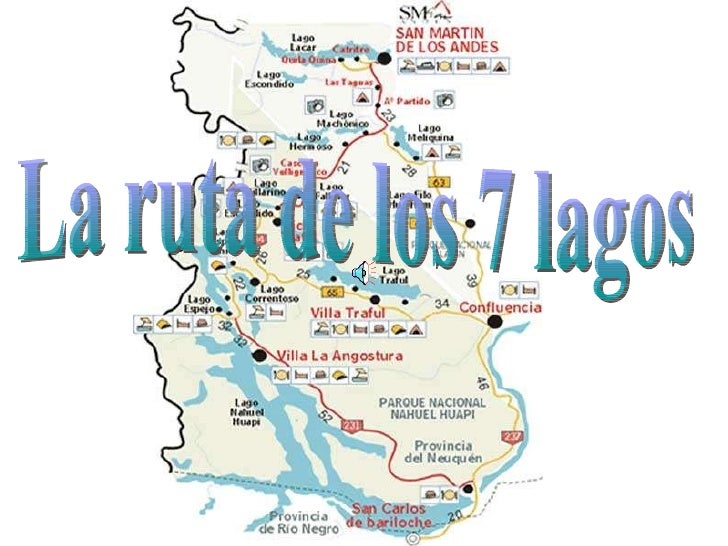

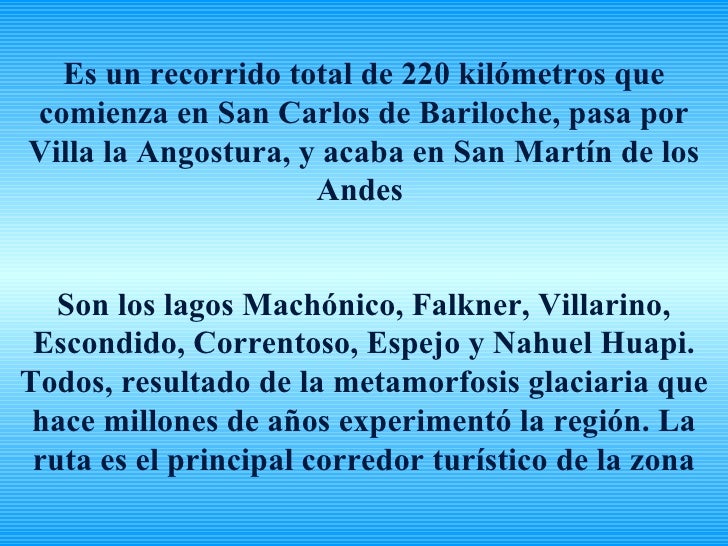










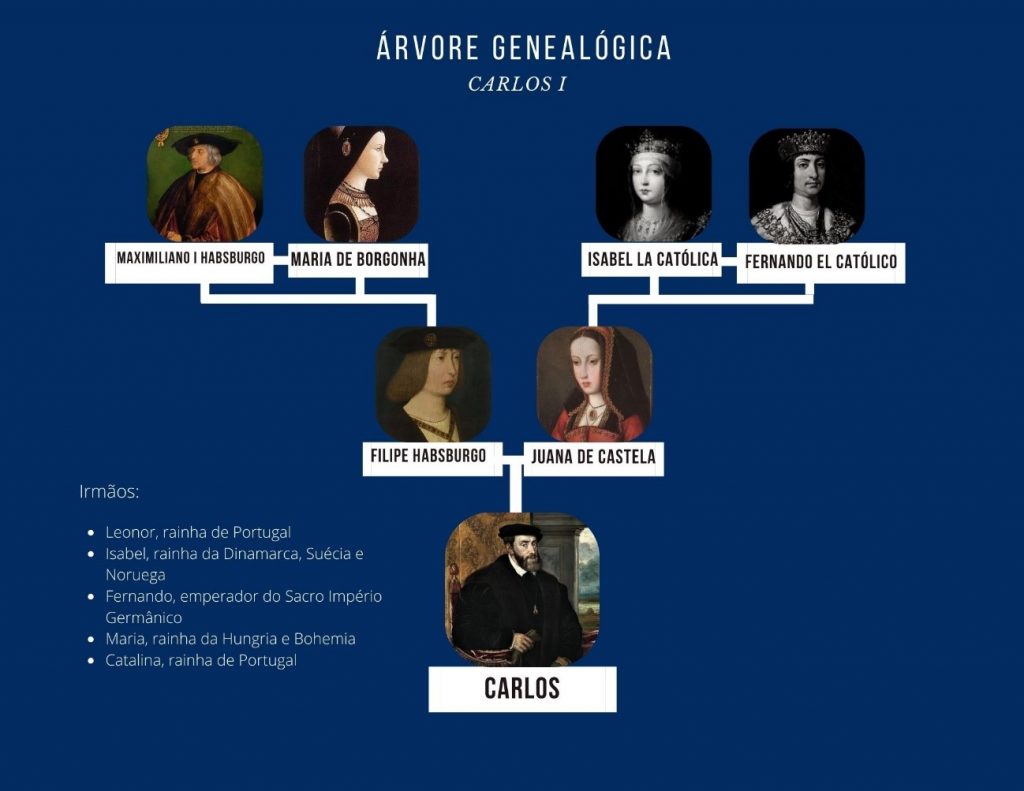
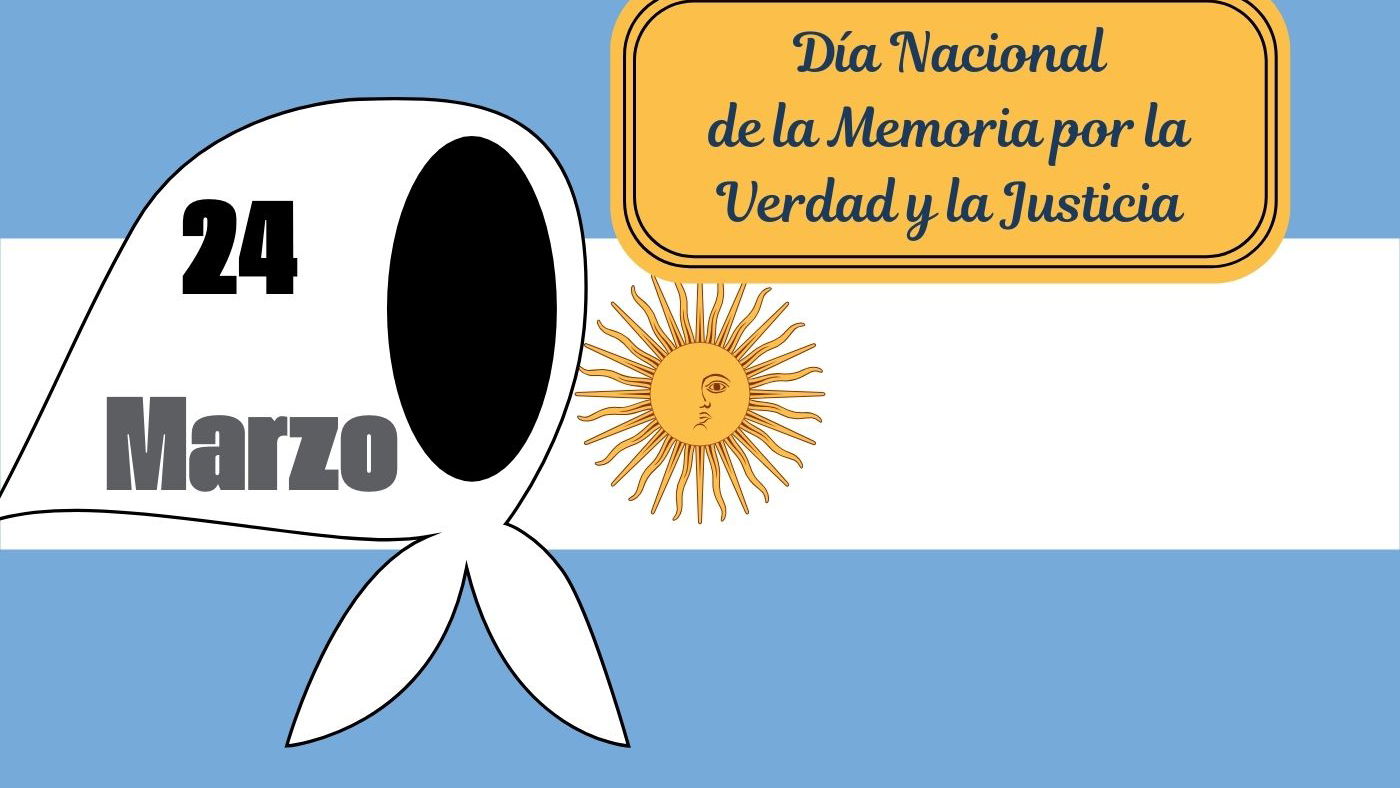



 Isabel tomando la comunión en privado
Isabel tomando la comunión en privado En julio de 1981, cuando cumplió dos terceras partes de la condena de siete años y medio -la Cámara le redujo seis meses a último momento-, Isabel quedó en libertad luego de cinco años de prisión (Getty Images)
En julio de 1981, cuando cumplió dos terceras partes de la condena de siete años y medio -la Cámara le redujo seis meses a último momento-, Isabel quedó en libertad luego de cinco años de prisión (Getty Images) En septiembre de 1975, luego de la crisis militar la señora de Perón se tomó una licencia en Ascochinga, Córdoba, y el senador Ítalo Luder la reemplazó. Su retorno al poder en octubre marcó el comienzo de la conspiración y en marzo del año siguiente fue derrocada. Años después, él senador fue elegido como presidente del partido
En septiembre de 1975, luego de la crisis militar la señora de Perón se tomó una licencia en Ascochinga, Córdoba, y el senador Ítalo Luder la reemplazó. Su retorno al poder en octubre marcó el comienzo de la conspiración y en marzo del año siguiente fue derrocada. Años después, él senador fue elegido como presidente del partido Isabelita, durante una de sus infrecuentes salidas en Madrid. Allí se instaló y se alejó definitivamente de la vida política de la Argentina
Isabelita, durante una de sus infrecuentes salidas en Madrid. Allí se instaló y se alejó definitivamente de la vida política de la Argentina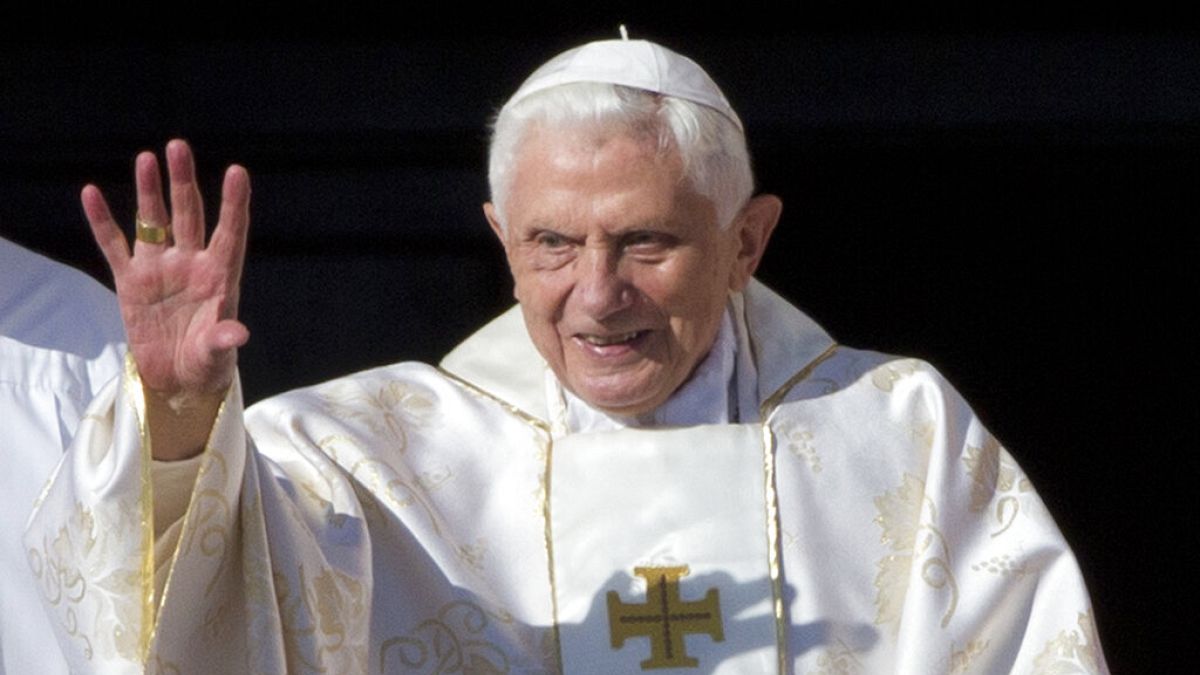
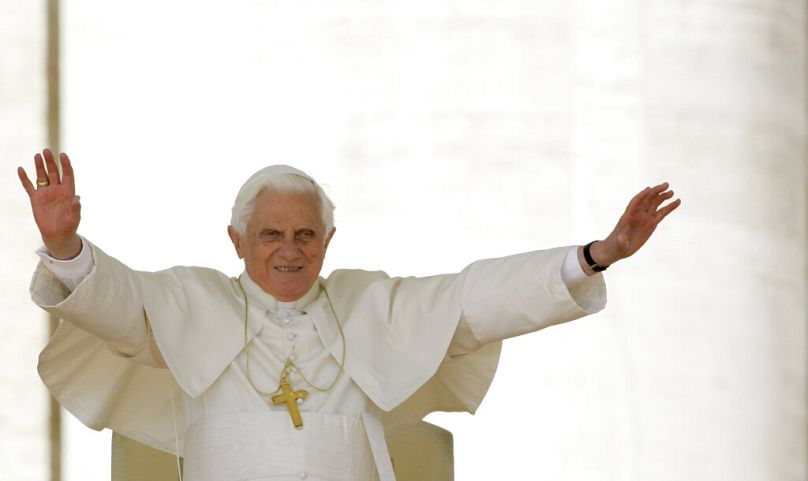
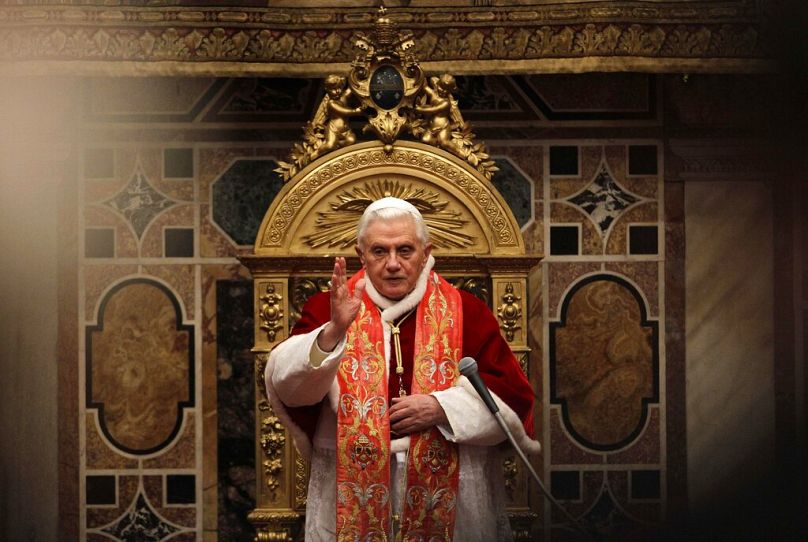
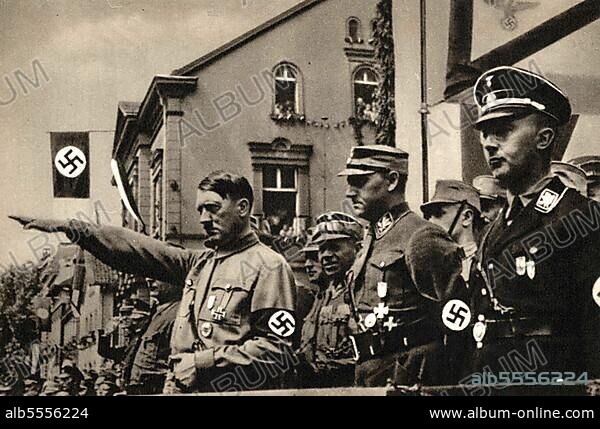

 Santa Maria Maggiore at night
Santa Maria Maggiore at night Jacopo Zucchi's Miracle of the Snow, Vatican Pinacoteca
Jacopo Zucchi's Miracle of the Snow, Vatican Pinacoteca The Virgin Mary looks down over Piazza Santa Maria Maggiore from the Column of Peace
The Virgin Mary looks down over Piazza Santa Maria Maggiore from the Column of Peace